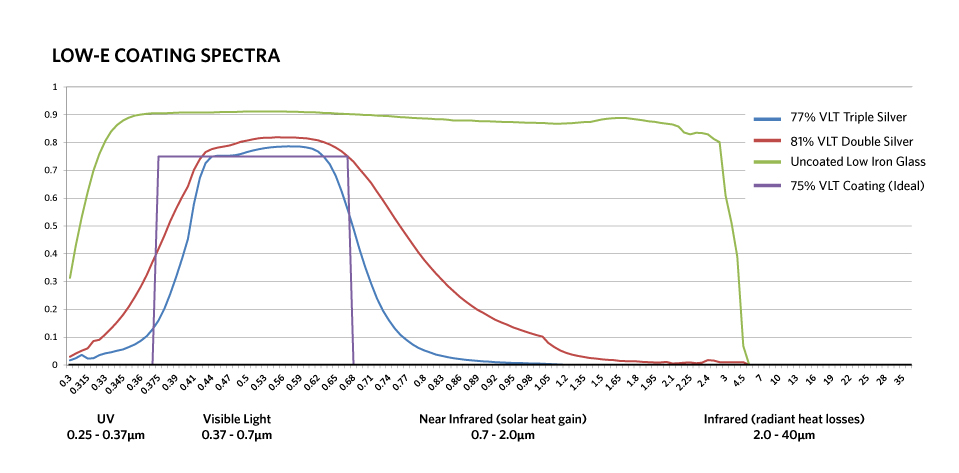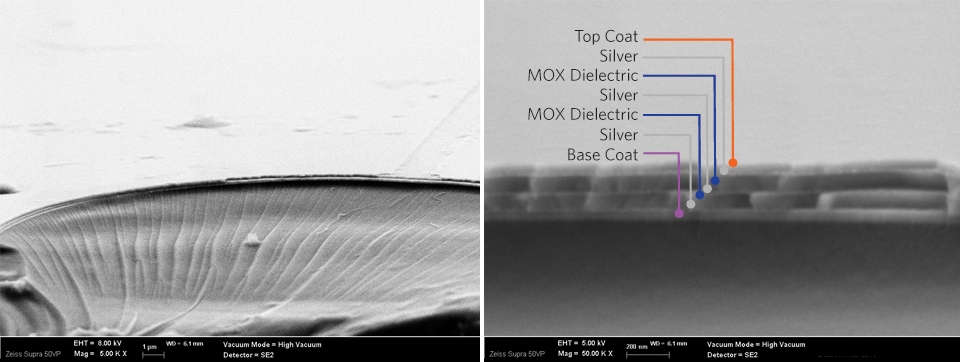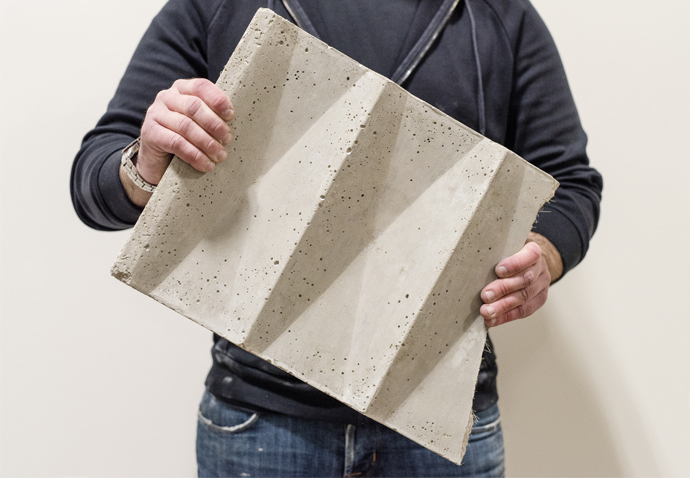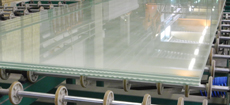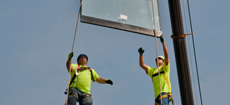Investigating Low-E Coating Technology for Glass
This diagram shows the general structure of a triple silver low-e coating with approximate thicknesses of each layer, as indicated by various patents.
Modern buildings are often clad in multi-layer insulated glass units (IGU) to enhance views and daylight. Since glass facades are often the most prominent part of a building, the optical qualities of the glass and its coatings impart a defining aesthetic. Most glass aesthetics are largely defined by the low-emissivity (or low-e) coatings that are applied to the glass. These coatings prevent solar radiation from passing through the front of the glass and radiant heat from escaping the building by reflecting it on the back side of the glass. Low-e coatings often give glass facades an undesirable mirror-like appearance; however, they are necessary since glass is a poor insulator. Therefore, the need for thermal performance and the desire for a non-reflective aesthetic are in direct conflict with one another.
Striking a balance between aesthetics and thermal performance of a glass facade involves careful selection of the low-e coatings, the glass, and the materials that compose the façade structure. We use analysis tools to quantitatively determine thermal performance and optical qualities of the glass facades we design. In pursuit of glass facades with optimal thermal performance and visual clarity, we must often seek out the latest coating technologies available. We recently sought to answer the question: What is the highest thermal performance with highest visible light transmittance possible with low-e coating technology? We also wanted to know How much better will low-e coating technology get in the future? and What do the layers in a low-e coating look like?
To answer these questions, we turned to patent filings by glass manufacturers, optical test data, and scanning electron microscopy. Modern low-e coatings on glass are composed of 12 or more layers of metals and ceramics in a 300 nanometer (0.0003 mm) thick coating, with some layers measuring only one nanometer (one billionth of a meter) in thickness. These coatings are applied by specialized coaters inside vacuum chambers. The latest low-e coating technology available incorporates three silver layers and multiple ceramic layers. These coatings are referred to as "triple silver" low-e coatings, and can offer as much as 70% visible light transparency and 30% better thermal performance compared to "double silver" low-e coatings. Glass manufacturers have recently been able to offer these coatings by optimizing the manufacturing process to apply the materials in ever thinner layers, making glass more transparent and enhancing thermal properties.
The thickness and composition of the layers is specifically designed to result in a highly tuned optical filter that passes only visible light, while reflecting near infrared (solar heat) and far infrared (radiant heat). Our analysis of spectral test data from two different triple silver coatings indicates that the triple silver coatings are very effective at passing only visible light, and there is little room for enhancing their thermal properties.
Transmission spectral data for 6 mm low iron glass (91% VLT), a double silver low-e coating (81% VLT), a triple silver low-e coating (77%), and an ideal coating (75% VLT), all on 6 mm low iron glass. While the ideal coating is not technically feasible, it passes all visible light neutrally while selectively reflecting ultraviolet, near infrared solar gain, and infrared radiant heat very effectively.
Our scanning electron microscope (SEM) analysis indicates that the coatings we are using correspond to patent filings by the respective manufacturers. This allows us to determine how advanced a manufacturer's commercially available coatings are relative to coatings under development. They also give us an unprecedented view of the incredibly thin coatings applied to architectural glazing.
Left: 5,000X magnification view of a fracture surface of low-e coated glass. The triple silver coating is clearly visible. Right: 50,000X magnification view of a low-e coating. The coating in this image measures approximately 250 nm in total thickness, about 1/200th the thickness of a human hair.
© KieranTimberlake
While this work is ongoing, our analysis indicates that triple silver coatings offer a significant thermal performance benefit without sacrificing visual clarity. Further, we should expect incremental improvement of current coating technology through manufacturing process optimization. Four or more layer coatings are possible; however, the small thermal performance gain may not offset the added cost of more layers. Significant improvement of low-e coating technology in the future will require new material and process breakthroughs beyond adding layers and process optimization.




